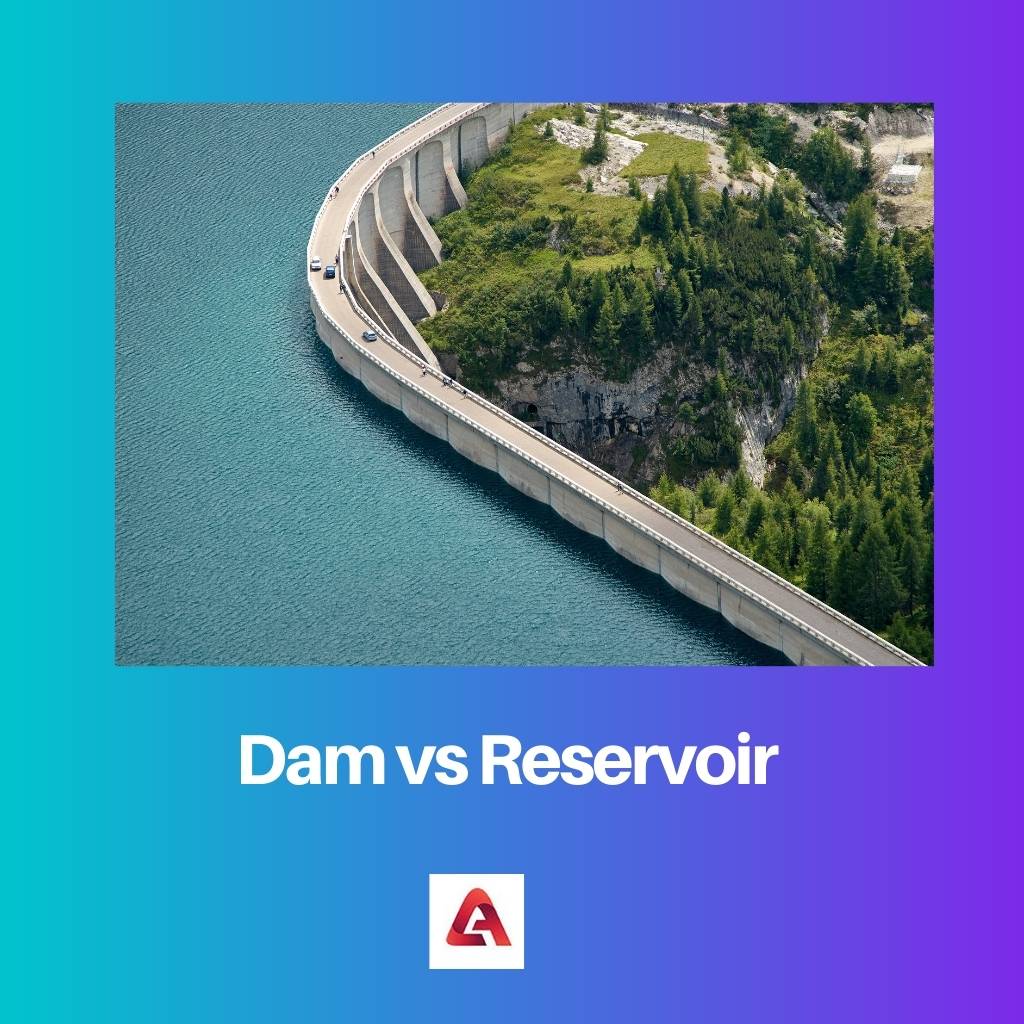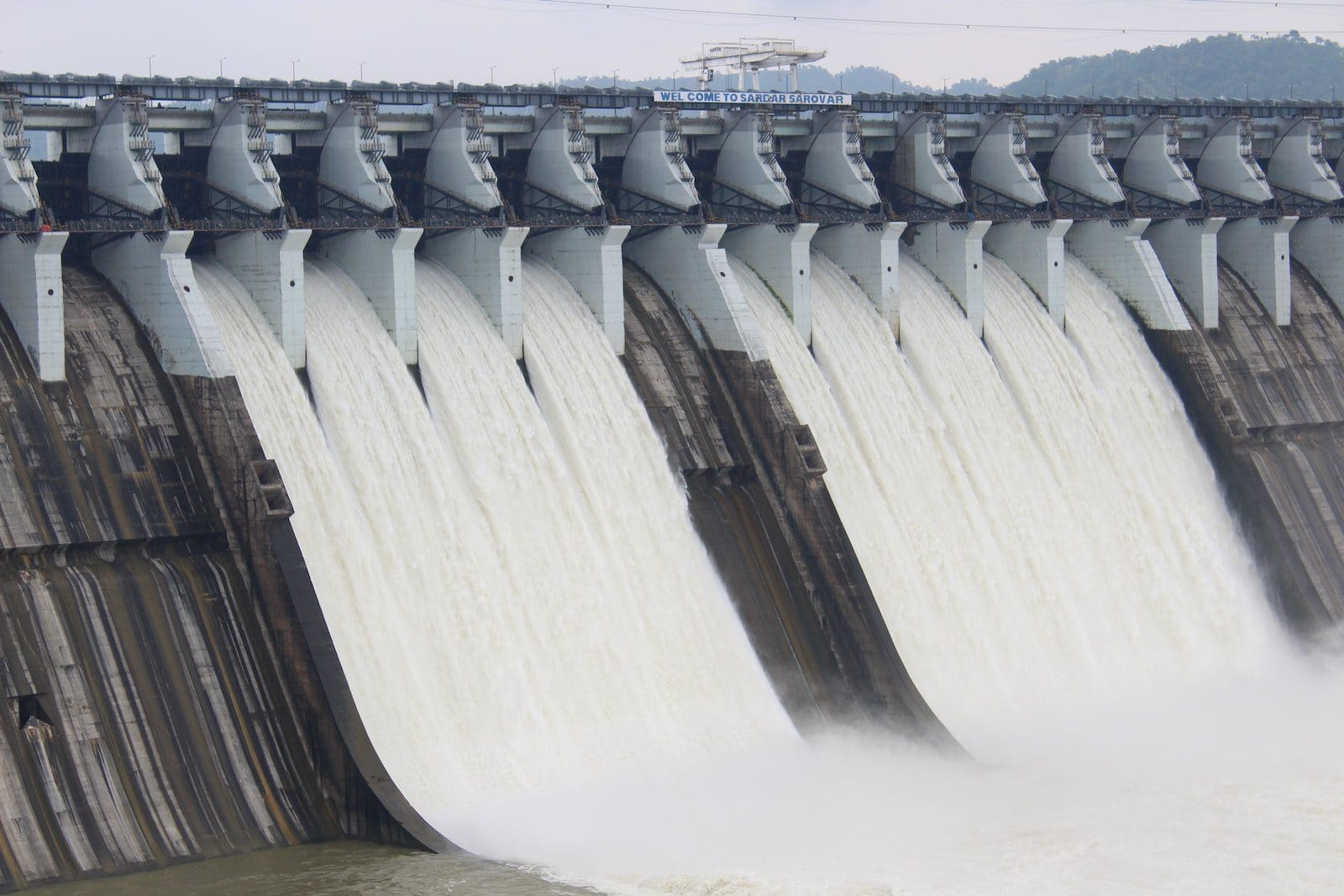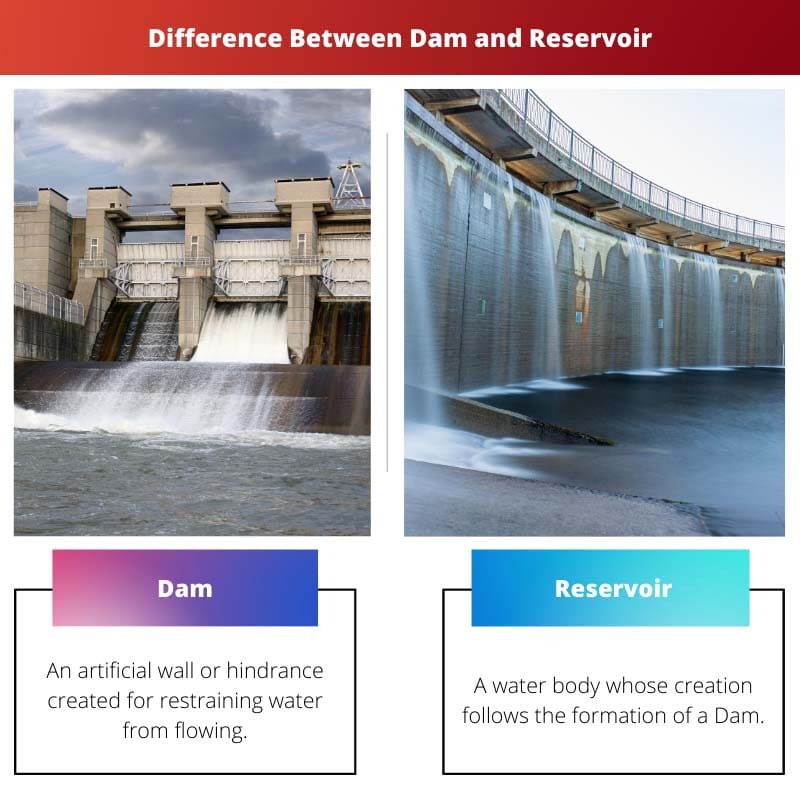There are various natural and artificial phenomena that make up the world we live in and the surroundings that surround us. Some of them are so significant that we must examine and manage them to the best of our ability in order to improve sustainability and reduce waste.
Water is one of these phenomena. Certain artificial devices are also employed to regulate the sustainability of the water around us. Dams and reservoirs are two elements that are used to control the flow of water and better utilize it.
While they both execute nearly identical tasks, there is a significant difference between them.
Key Takeaways
- Dams are structures built across a river to control water flow, while reservoirs are artificial lakes created by damming a river.
- Dams serve multiple purposes, such as flood control, hydroelectric power generation, and irrigation.
- Reservoirs provide water storage for various uses, including drinking water, agriculture, and recreational activities.
Dam vs Reservoir
A dam is a physical structure built across a stream or river that retains water. The water is accumulated in the dam, and after reaching a certain height, it is allowed to overflow and used for irrigation, hydropower, flood mitigation, and town water supply. A reservoir is a water body created by a dam.

A Dam is an artificial barrier that is used to restrict the flow of running water so as to either make use of that accumulated water or to prevent it from flowing for whatever reasons. It looks like a wall made of concrete and other construction-based materials.
On the other side, Reservoir is something that comes into existence in the very first place due to the presence of a Dam. It is an artificial water body that generates from the water that has been retained by a Dam.
At some places, these reservoirs appear as larger lakes and other water bodies due to the huge amount of water stored in them.
Comparison Table
| Parameters of Comparison | Dam | Reservoir |
|---|---|---|
| Meaning | An artificial wall or hindrance created for restraining water from flowing. | A water body whose creation follows the formation of a Dam. |
| Made of | Concrete, steel, and other things. | Water which has been accumulated by a Dam. |
| Uses | Caters the need for electricity in many industries and cities connected to the location. | Caters the need of not only the electricity but agriculture too. |
| Appearance | Looks like a giant artificial wall. | Looks like a water body, mostly a lake or a river. |
| Impact on Nature | The creation of a Dam usually interferes with the natural lifecycle of organisms having their home in the water. | A Reservoir becomes the reason for displacing residents from that area in order to avoid any loss towards persons or property. |
| Interrelation | Creation of Dam results in the creation of a Reservoir. | The reservoir is created due to the creation of a Dam in the first place. |
What is Dam?
Water flows at a different pace in many areas, and in some places, it flows more than it is needed. To cope with this situation, Dams are created. These are the artificial walls or barriers to restrict the water from flowing in a particular direction.
A Dam is created of concrete, steel, and many other materials.
A Dam is built at a higher altitude than the flow of the water could ever reach. At a certain point, walls are let down when there is a need for that water to get flowing. This results in the control and management of the flow of water by us humans.
There exists a number of reasons which Dams are created all over the world despite them being against the natural flow of nature. The most common reason is the generation of electricity to cater to the needs of various industries and nearby residential areas.
The water that is accumulated is released at a very high speed in order to generate kinetic energy.
Apart from this, Dams are also built to aid in agricultural needs, prevent the water from overflowing in residential areas, and provide water for many industries.

What is Reservoir?
A reservoir is nothing but an artificial water body that takes birth due to the creation of a Dam. Whenever a Dam is built, it restricts the flow of water. That restricted water gets piled up behind that Dam and takes the form of an artificial water body.
That particular water body is what we call a Reservoir.
A Reservoir becomes the reason for displacing residents from that area in order to avoid any loss of persons or property. Generally, the water gathered in a Reservoir is clean at its initial stage, but gradually it becomes dirty due to being still.
These reservoirs provide water for many purposes, such as
- Generation of electricity
- Transportation in water
- Boating
- Fishing
- Irrigation in agricultural lands

Main Differences Between Dam and Reservoir
- A Dam is an obstruction created by us humans in order to restrain the course of water in many areas, while a Reservoir amounts to the water that is stored due to the presence of a Dam.
- A Dam is made of many materials used in construction all over the world. However, a Reservoir exists due to the accumulation of water.
- A Dam has the look of a barrier or wall, while a Reservoir looks like an artificial water body.
- A Dam is mainly used to store water in a single place and make use of that water afterward. On the other hand, a Reservoir is used for many purposes, such as generating electricity, water transportation, etc.
- A Dam is a way of creating a Reservoir, while a Reservoir is the end result of the creation of a Dam.

- https://link.springer.com/article/10.1007/s11356-018-1867-8
- https://bioone.org/journals/mountain-research-and-development/volume-38/issue-3/MRD-JOURNAL-D-16-00124.1/Local-Residents-Perceptions-of-a-Dam-and-Reservoir-Project-in/10.1659/MRD-JOURNAL-D-16-00124.1.full

The article provides comprehensive insights into the creation and impact of dams and reservoirs.
I share your view, The impact on nature was particularly interesting.
The information provided in the article is highly educative and enlightening.
The article has aptly described the uses and impact of both dams and reservoirs.
I concur with your view, The impact on nature was particularly interesting.
The distinction between dams and reservoirs has been clearly presented, and the table of comparisons was very helpful.
I concur with your thoughts, The comparison table provided a clear and concise summary.
I think the information was presented logically and succinctly, I enjoyed reading it.
The details provided in the article are well articulated and very informative.
I agree with you, The article was quite educational and thorough.
The article offers a detailed description of the uses and appearances of both dams and reservoirs.
I couldn’t agree more, The article was quite informative.
I appreciate the comprehensive and well-organized information provided.
The article effectively explains the difference between dams and reservoirs, and the practical applications of each.
I agree with your assessment, The uses of both are also well described.
The article succinctly presents the creation and uses of dams and reservoirs. Very informative!
I agree with your assessment, The article was well written and easy to understand.
I share your opinion, The information was presented in a clear and logical manner.
The relationship between dams and reservoirs was elucidated in a clear and understandable way.
I share your opinion, The content was quite insightful.
This article effectively captures the essence of dams and reservoirs, and their impact on nature.
I share your view, The comparison between dams and reservoirs was well explained.
This article offers a brilliant explanation of dams and reservoirs and their interrelation.
I wholeheartedly agree, The details provided were truly enlightening.